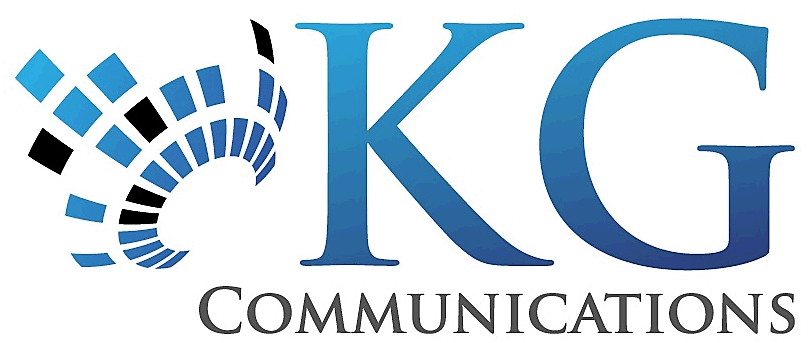Markets go through changes; they evolve. It’s normal. Sometimes we are not really aware of subtle changes in an industry or segment of society and know even less about what drives those changes. In the cellular industry, a change has been taking place over the last year that will affect most of us. It is the move toward BYOD. That is, the “Bring Your Own Device” trend.
For over twenty years cellular companies have been emphasizing the importance of being on their service rather than someone else’s through the marketing tactic of de-emphasizing the importance of the end user’s device. Getting the most users onto their network was of paramount importance; getting “loading” was the goal. The recurring revenue gain from providing phone and text services was primary. Making the buyer’s choice more about the rate plan than the phone was important in several ways. First, it removed much of the confusion or indecision about which phone was better for a customer (models differed in many ways and did not necessarily work on each carrier). Second, rate plans can be manipulated to be trendy and be shaped to attract a certain type of user. Focusing on the plan removed much of the potential indecision a customer may experience and aided impulse buying. To remove the phone itself from being acustomer’s primary consideration, cellular carriers began offering the phone as part of the deal. Many phones were “free” with activation, or provided at very little cost just to get the customer to sign up.
The truth is that cellular phones came commoditized, to be thought of as being free, or of very little value. Cellular carriers were subsidizing the cost of the phone device to hide its significance from the consumer. In fact, the customer was paying for the phone over the term of the contract. That is exactly why contracts were required. The cellular carrier was buying the phone and then providing it to the customer while recouping its cost by charging rate plans that paid back the subsidy, plus interest, over the term of the contract. To assure that the carrier would be paid back, the contract was necessary. The cost of the phone, plus the cost of the service were calculated together in such a way that the carrier would be paid back for, in essence, loaning the customer the money to purchase the phone. Early Termination Fees (ETFs) were due if a customer dared to quit the contract before term. The ETF was there to protect the carrier from losing the price of the phone together with losing the customer.
It’s not a complicated arrangement, but many cellular customers never really understood that they were purchasing their phone on an installment plan. It just wasn’t explained that way. As a result, many cellular customers were using phones that they may not have chosen for themselves. Carriers understood that. A clever way to overcome that is how the “upgrade” eligibility came into being. Carriers calculated the date at which a user had “paid” for the subsidized phone. After that date, they made the customer “eligible” to “upgrade” to a better phone. Of course that also required the reworking of the contract term onto a new two year contract. It was a slick way to get and keep customers, packaged in such a way as to make the customer believe that, in some way, he had done something to earn a reward – the upgrade. It’s a little deceptive, but we have all accepted it and all carriers have practiced it. Well, today we have carriers with rather mature, well-loaded networks and a new type of end user device – the “Smartphone”.
Believe it or not, smartphones are new enough in our society that even the spell checker on my computer doesn’t recognize it as a real word. Smartphones have revolutionized the cellular world. It might be well for me to define what a smartphone is so the rest of this dissertation will make better sense.
A “Smartphone” is a wireless mobile device that includes a mobile phone and a computer operating system (the OS). Today’s popular operating systems include Android (by Google), iOS (by Apple), Windows Mobile (by Microsoft) and Blackberry (by RIM). It is the operating system that differentiates the smartphone from any other type of device that contains a phone. Though other phones, older or contemporary, use microprocessors and sophisticated electronics and software, the OS in a smartphone provides the device computing power to run computer applications and to run multiple applications simultaneously. The user can do multiple simultaneous activities such as read the contents of an email to another party over the phone device on which he is reading the email. Multi-tasking. This reveals a tremendously important fact about the networks that support smartphones – they are very advanced networks. For a smartphone user to perform the feat of both reading an email and speaking on the phone using one device requires a network that has both the capacity to, and the intelligence to support multiple simultaneous use of two concurrent connections, a voice and a data channel by a single device. That is the major difference between a 3G network and a 4G network. LTE makes the smartphone user experience the miraculous one that it is. Smartphones would not be in existence were it not for 4G. It is the very human need to perform multiple simultaneous tasks that has brought us to this amazing capability.
It is also that human need that caused carriers to realize that they will not long be able to, in effect, chose for their customer the smartphone that customer will use. Customers will want to chose that for themselves, based on their individual habits. Further, along with the huge advance in technical capability comes a very real increase in device cost. So large is the increase in cost to carriers, that smartphone cost can literally cripple a carrier continuing the subsidy program due to tying up so much cash in equipment that is put into the hands of others. It is also very difficult to support that additional cost spread over only two years. Add in the additional network cost to provide this multi-tasking service, which uses more network resources than ever. A new paradigm in marketing had to be on its way.
A smartphone, by its nature, is a much more personalized device than cell phones were before. They have real browsers, synced email, high definition video and still cameras, personalized applications, personal data and individualized OS that adapts to the user’s way of living. It’s harder for a customer to part with such a device. It is, therefore, a non-sequitur for a carrier to continue the free phone and upgrade concept. People want to keep the smartphone they have become accustomed to. Moreover, with the device they now wish to own being so personalized, customers also want that phone to last longer. All of this leads us to a necessary change in the industry marketing thought process.
Enter: BYOD. Bring Your Own Device. Good marketing will make any simple idea seem new, grand and innovative. And, good marketing can conceal a rather significant change as being barely perceptible by featuring some collateral effect. To create a near instant acceptance to a big change, carriers again defocused on the device and focused on the rates. Introducing: New low rate plans and huge amounts of data. (Data usage, of course is the big new characteristic of smartphones – and, therefore a battlefield for carriers to fight over for subscribers). The new low rate plans exist because carriers are now “allowing” their customers to Bring Your Own Device. Gone from the monthly rates is the hidden price of the phone. For a while, monthly rates for service will seem suddenly low. A marketing breakthrough. The battle over data will rage for a while until users become savvier about those marketing tricks. Competition for subscribers will settle, once again, back to network coverage and rate plans; this time more about speed, throughput and $ per Gb.
A very significant change is already being seen in the end devices. Because the actual phone or Smartphone is so much more prominent in the eye of the customer, the useful features, bundled applications, device ruggedness, its stylishness, accessory availability and the degree to which the smartphone is perceived to be future-proof are all important attributes of a subscriber’s experience. The BYOD transformation is having an impact across the industry. Understanding it will help you, as the consumer of phones and services, to make better choices and comprehend the newest cellular jargon to your advantage.
So, shop your smartphone well. You have more to consider than ever, and the choice is more fully yours than ever.
— Darin Alvord
VP of Engineering
KG Communications
www.kgcomm.net


